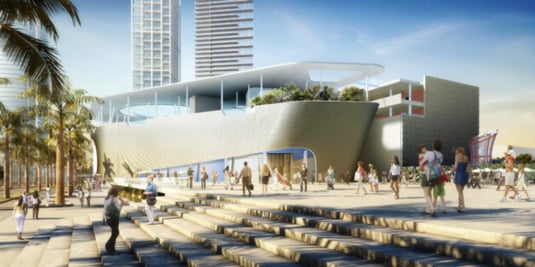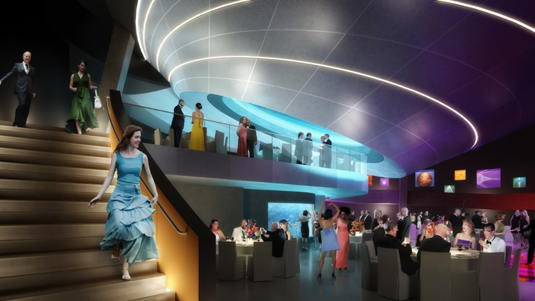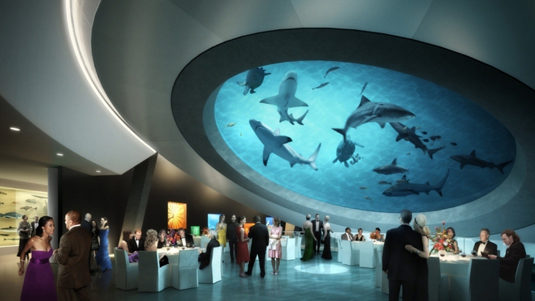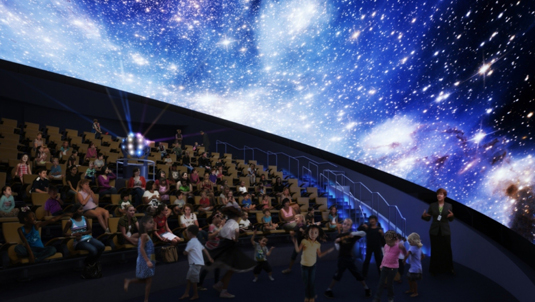
February 15, 2013
Earth Sciences Make It Clear, There Is No Planet B
Earth sciences help us understand our planet and the impact of our actions on it
Entrance: As visitors enter the new Patricia and Phillip Frost Museum of Science, they will be surrounded by lush landscaping that is built into the structure itself. The 250,000 square-foot complex is intended to act as a demonstration of ecological and sustainability principle, with the building harnessing energy from water, sun, wind and even museum visitors to power exhibits and conserve resources.
“There is no Plan B, because there is no Planet B,” said UN secretary-general Ban Ki-Moon at Stanford University earlier this year. In the decades since we first glimpsed Earth suspended in space and seemingly without boundaries, we’ve been learning to become aware of the fragility of life. We now know that the planet can quite happily continue without us. Bacteria and probably cockroaches will survive most disasters, but with a population of 7 billion and growing, it’s not so evident that our species can do the same.

Promenade: The open plaza of the new Patricia and Philip Frost Museum of Science will lead visitors to the Energy Playground and the adjacent Jorge M. Perez Art Museum of Miami-Dade County.
Life depends on energy for every necessary exchange. At each stage of that exchange, some energy is lost as heat or as increased disorder or entropy. Most of this energy comes from the sun. Life depends on how well we manage this exchange. We live in that very narrow interface where conditions are hospitable to human life and, as the sun slowly runs out of energy; if we waste it, we hasten our demise. Of course, in geological terms, this is a long way off. We can, however, address the issues here and now and see what we can do to make our planet a great place for more of us to live – hence the importance of earth sciences.

Evening signage: At night, the new Museum of Science will be illuminated with various colors of light and signage, reflected on the planetarium and building structure.
Earth sciences help us understand our planet and the impact of our actions on it. This may involve exploiting energy resources, understanding climate or modeling ocean currents. Each of these may have a profound impact on how we live. Understanding how changes evolve over long periods of geological time, yet can also change catastrophically in the short term, gives us a perspective on the actions we take.

Lower level: The lower level of the museum will give visitors a glimpse into the lowest level of sea life.
In Miami we inhabit a narrow, dense urban strip sandwiched between the Everglades and the Atlantic Ocean. Here we know that we must pay attention to water conservation, controlling parasites and disease, managing competing energy needs and, of course, the hurricanes that disrupt the normal tenor of our lives from time to time. The new Patricia and Phillip Frost Museum of Science, designed by Grimshaw Architects’ New York office, will raise people’s awareness of environmental changes over time and show how the earth sciences inform and help us find solutions to the issues of living here in this city, on this planet, our only home.

Mezzanine: Constructed on an axis, the 500,000 gallon aquarium can be accessed from all levels of the museum, including the mezzanine level, which will be available for private functions as well as public gatherings.
With both an aquarium and a planetarium, we’ll be able to explore change over time at extreme scales, from the origins of the universe to the day and night rhythms of ocean life. The Living Core aquarium will start with life in our backyard, from the Everglades to the Gulf Stream, both unique ecosystems.

Planetarium: The full dome, 3-D planetarium will showcase a wide range of interactive exhibits.
Energy underpins it all. And the Energy Playground will give visitors the opportunity to explore basic concepts. From our hunt for life elsewhere in the universe to the nanoworld of materials, the earth sciences open a door to understanding our planet, our place on it, the solutions to challenges of managing it better, living with it. As Joi Ito, director of MIT’s Media Lab puts it, “One hundred years from now, the role of science and technology will be about becoming part of nature rather than trying to control it.” Understanding earth sciences is a key aspect of that.
Gillian Thomas is the CEO of the Miami Science Museum, now expanding into a 250,000 sq. ft. facility at Museum Park in downtown Miami. It will open its doors as the new Patricia and Phillip Frost Museum of Science in 2015.





